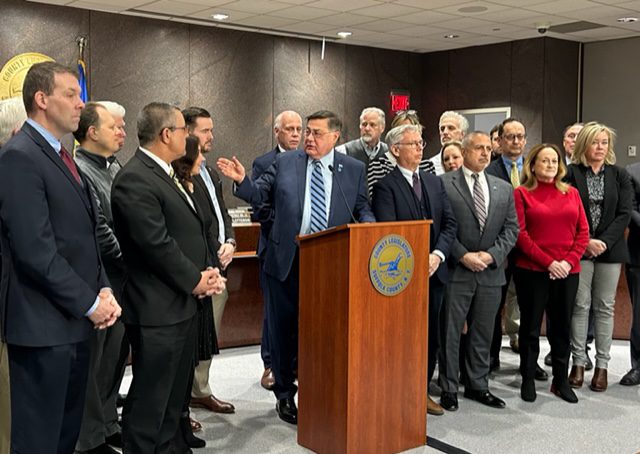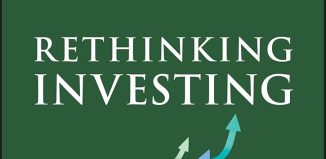Clean water advocates embrace Suffolk measure

By Mallie Jane Kim
Clean water may be on November’s ballot in Suffolk County, a development welcomed by area water quality advocates after a similar measure failed to reach voters last year.
Suffolk County Executive Ed Romaine (R) announced the plan at a Feb. 5 press conference, surrounded by a bipartisan coalition of legislators as well as representatives from environmental groups and the county water authority. The plan marks an agreement that, if approved in Albany, would give voters the choice to adopt a 0.125% sales tax increase toward curbing pollution of area drinking and swimming water through new sewers and replacement of aging cesspools with nitrogen-removing septic systems.
“The future of this county depends on water, clean water,” Romaine said at the conference. “Let’s make sure that we will always have clean water, not only under our feet to drink, but clean water on our surfaces and our bays, our rivers, our creeks, our streams, our Sound.”
Romaine said he hopes to see, in addition to the tax revenue raised, some state funding from New York’s 2022 Environmental Bond Act as well as federal funds from President Joe Biden’s (D) infrastructure framework come into play for local sewer projects.
According to the bill sent to Albany for approval, there are 209,000 cesspools in “environmentally sensitive areas” of Suffolk County that need to be replaced. The nitrogen in the wastewater released from these systems impacts area waterways as well as the county’s sole drinking water source, the underground aquifer.
“I was really pleased everybody came together to make this happen,” said George Hoffman, who heads the water quality testing program for the Setauket Harbor Task Force. “It bodes well that the first major initiative of the new Legislature under Ed Romaine is a significant environmental initiative.”
According to Hoffman, high nitrogen levels in the Long Island Sound contribute to a chain reaction of algae blooms and low oxygen, which makes fish die off. The nitrogen also impacts shoreline vegetation and can increase erosion, he said.
Hoffman, whose group measures water quality in Setauket Harbor from May through October, said 75% of the nitrogen that enters the harbor is coming from cesspools, and he welcomes the coming help for homeowners who need to replace their waste systems — especially those with homes close to the water, where there is not enough distance between the cesspool and the shoreline to allow soil and bacteria to naturally filter out nitrogen from wastewater before it enters the Sound.
“People tell us stories where at high tide in the harbor, the water in the toilet bowl goes up and down, which means the cesspool is in the water,” he explained. “For us in the harbor, we’ve been promoting the need to update these systems.”
The plan heading to Albany is a slightly altered version of the one that failed to pass the county Legislature last year — the new plan notably splits the funds evenly between installing sewers and replacing aging cesspools with smart septic systems.
The plan that failed last year would have given about 75% of funds to septic systems, based on a Stony Brook University study on the proportion of pollution sources.
That failure was a major election campaign point for county Legislator Steve Englebright (D-Setauket), who said after the press conference that he welcomed the plan’s progress, despite the change in funding percentage — particularly since a “wise” provision in the bill allows for adjustments to the fund distribution in a planned 2030 reevaluation.
“We broke the logjam,” he said, celebrating the collegiality and compromise on both sides of the political aisle. “This is something that really needs to happen in order to protect our largest industry, which is tourism, as well as the health and well-being of our families and neighbors and children. So, it’s an investment into the future.”
The Legislature and environmental groups all indicated they planned to launch a voter education campaign before the referendum goes to the ballot.
At the press conference, Romaine urged anyone concerned about the 0.125% tax increase to “think of what the future is, and the cost of not doing this,” he said. “It’s time to step up to the plate because if we don’t, we won’t be able to drink our water.”






